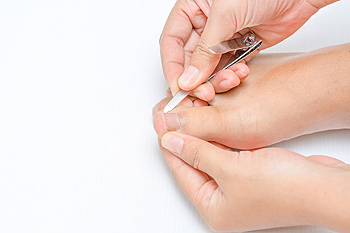What Can Cause an Ingrown Toenail?

An ingrown toenail is a common and painful foot condition that occurs when the sides or corners of the toenail dig into the skin at the end or side of the toe. While this condition can affect any toe, it most commonly plagues the edges of the big toe. Wearing tight shoes, high heels, and pointed-toe footwear can compress the toes, causing the nails to curl into the skin. The way your toenails are trimmed matters. Cutting them too short or rounding the edges can encourage the nail to grow into the skin, increasing the risk of developing an ingrown toenail. Any injury near the nail, such as a ripped nail or a nail peeled off at the edge, can cause an ingrown toenail to form. Fungal infections of the toenail sometimes lead to thickening or widening of the nail, making it more prone to grow into the nailbed. Finally, nails with odd shapes can make them more susceptible to becoming ingrown. Symptoms of ingrown toenails typically begin with redness at the end of the toe, mild swelling, and pain. The presence of white or yellow pus and drainage may indicate an infection. For help with managing the discomfort of an ingrown toenail, it is suggested that you make an appointment with a chiropodist.
Ingrown toenails may require medical attention. If you have significant pain or notice signs of infection from an ingrown toenail, please consult with one of the chiropodists from The Footcare Centre. Our chiropodists will assess your condition and provide you with quality foot and ankle treatment.
What Is an Ingrown Toenail?
An ingrown toenail occurs when the edges of a toenail grow into the surrounding skin. The toenails of the big toe are usually affected, however, an ingrown toenail can happen on any toe. Sometimes, the area can become infected leading to potentially serious complications. The ingrown toenail may be caused by improper trimming of the toenail, wearing ill-fitting shoes, or injury to the nail.
Symptoms
The symptoms of an ingrown toenail include:
Pain
Swelling
Redness
Warmth
Pus or drainage from the affected nail or a fever may indicate an infection of the area.
Treatment
Treatment depends on the severity of the ingrown toenail. In less severe cases, home treatment may be adequate. Soaking the affected foot in warm water and gently lifting the nail from the skin with a piece of clean cotton can help. In more severe cases, you may need to use topical or oral antibiotics to treat an infection. Surgical removal of the ingrown toenail may be required if more conservative treatments fail.
Ingrown toenails may be prevented by wearing well-fitted shoes and properly trimming the toenails. Toenails should be trimmed straight across and not too short when using nail clippers.
If you have any questions, please feel free to contact our office located in . We offer the newest diagnostic and treatment technologies for all your foot care needs.
